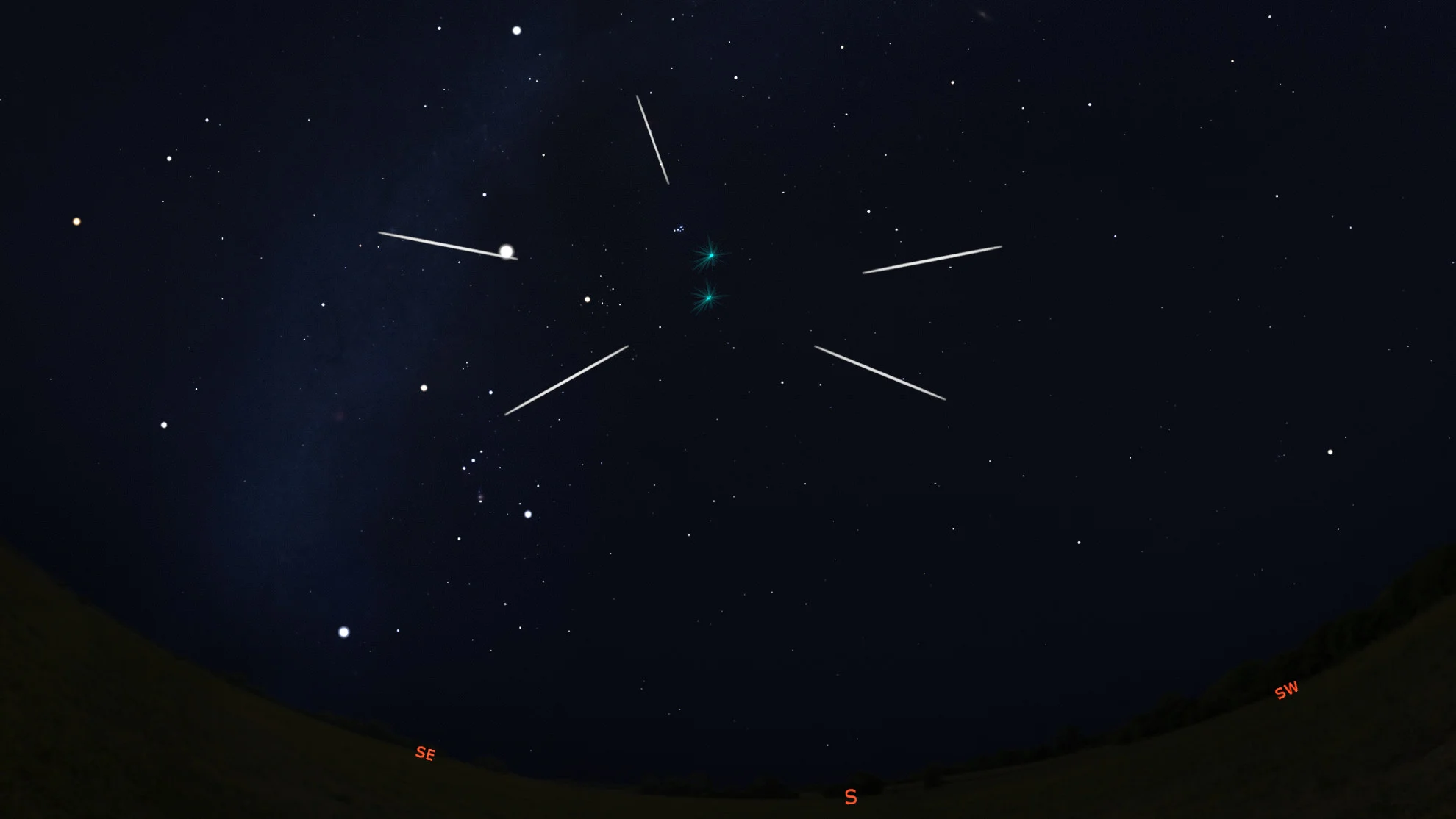
Keep your eyes on the sky for Taurid meteors flashing through the night
The twin Taurid meteor showers can produce some exceptionally bright fireballs.
Early to mid-November is the time to spot remnants of what could be a shattered comet blazing through the night as the Taurid meteor showers reach their peak.
Every year from late September through early December, night sky observers will note a concentration of meteors that appear to radiate out from a point in the sky near the constellation Taurus. These Taurid meteors are the result of Earth sweeping up dust particles, along with the occasional pebble, as the planet passes through a wide swath of debris in space.
Watching these meteors closely over the years, though, astronomers noticed that this meteor shower was far more complex than the others we see each year. The meteors appeared to stream out of multiple different points in the sky (known as 'radiants'), although this is generally simplified into two separate meteor showers — the Northern Taurids and the Southern Taurids. Plus, there seemed to be a recurring pattern of bright fireballs being mixed in with the normal activity of these two showers.

The two main 'radiants' of the Taurid meteor showers, near the constellation Taurus, are shown near zenith at midnight in this simulation of the night sky. (Stellarium/Scott Sutherland)
RELATED: Look up! What's going on in the November night sky?
According to the American Meteor Society, Earth encounters the Southern Taurids stream first each year, around September 23. This meteor shower peaks on November 4-5, producing a handful of meteors per hour throughout that night, and after the peak, we continue to see the occasional Southern Taurid meteor up until around December 8.
Meanwhile, the Northern Taurids begin around October 13, peak at about the same rate as the southern stream (5/hour) on the night of November 11-12, and the shower ends around December 2.
The best time to watch either of these meteor showers, especially on the nights of their peaks, is in the hours after midnight, when Taurus is high in the sky. For your best chance to spot meteors, get as far away from urban light pollution as possible, give your eyes about 20 minutes or so in the dark to adjust, and then look up and take in as much of the night sky as possible.
READ MORE: How to get the most out of auroras, meteor showers, and other night sky events
Ancient comet breakup
Most often when the subject of the Taurid meteor showers comes up, they are linked to a comet known as 2P/Encke.
We've known about Encke's Comet for a very long time. It was first spotted back in the late 1700s, and astronomers figured out that it was a recurring (periodic) comet — returning every 3 years or so — in the early 1800s.

NASA's MESSENGER spacecraft imaged Comet Encke during its closest approach to Mercury on November 17, 2013. (NASA/Johns Hopkins University Applied Physics Laboratory/Carnegie Institution of Washington/Southwest Research Institute)
Over the years, 2P/Encke's orbit has been traced around the Sun and it was found to be firmly embedded within the debris stream for the Southern Taurids. The direct source of the Northern Taurids was a bit of a mystery, though, up until 2004. That's the year the Spacewatch survey at the Kitt Peak National Observatory discovered an asteroid now known as 2004 TG10. The orbit of this asteroid around the Sun matched so closely with the debris stream for the Northern Taurids that you will often find it listed as the source of that meteor shower.
However, while 2P/Encke and 2004 TG10 are separate objects and appear to 'shepherd' each of their distinct debris streams, their similarities point to a common origin. It is believed that they are two pieces of a much larger comet that broke apart, some 10,000 years ago, with all of the Taurid debris likely coming from this large object.
DON'T MISS: Solar max has arrived! Here’s how and where to see the Northern Lights
Taurid fireballs
In addition to Comet Encke, asteroid 2004 TG10, and their respective dust streams, there is another batch of debris associated with the Taurids that can produce its own light show around this time of year.

Three Taurid fireballs captured by the NASA All Sky Fireball Network in 2012, 2013 and 2014. Credit: NASA
Embedded within the Southern Taurid stream is a concentration of gravel-sized meteoroids that astronomers call the Taurid Resonant Swarm. While the dust grains from the normal streams create brief flashes of light when they hit the atmosphere, these larger meteoroids produce bright fireballs. Some can even explode as bolides that momentarily light up the night as if it was daytime.
However, unlike the Taurid meteor showers, we don't encounter the full Taurid Swarm every year. According to Robert Lunsford of the American Meteor Society, it's a bit more complex than that. Some years we won't see anything from the swarm, while others years the swarm will dominate. In between, we can see normal activity, along with a fireball or two from the swarm showing up as a reminder that the swarm is still out there. Possibly the most famous of these fireballs was the one that exploded over St. Louis, MO, on November 11, 2019.
Watch below: Taurid fireball streaks across St. Louis sky illuminating Gateway Arch
The Taurid Swarm is not expected to be active in 2024. However, in 2022, astrophysicist Auriane Egal co-authored a research paper with colleagues Peter Brown, Paul Wiegert, and Yung Kipreos at Western University, which predicted the Taurid Swarm would return in both 2025 and 2032.
Still, with stray bits of gravel in the Taurid stream potentially showing up each Fall, it's worth keeping your eyes on the night sky over the next week (at the very least). You might just spy a bright fireball for your efforts.
(Thumbnail image courtesy the free, open-source planetarium software, Stellarium)











